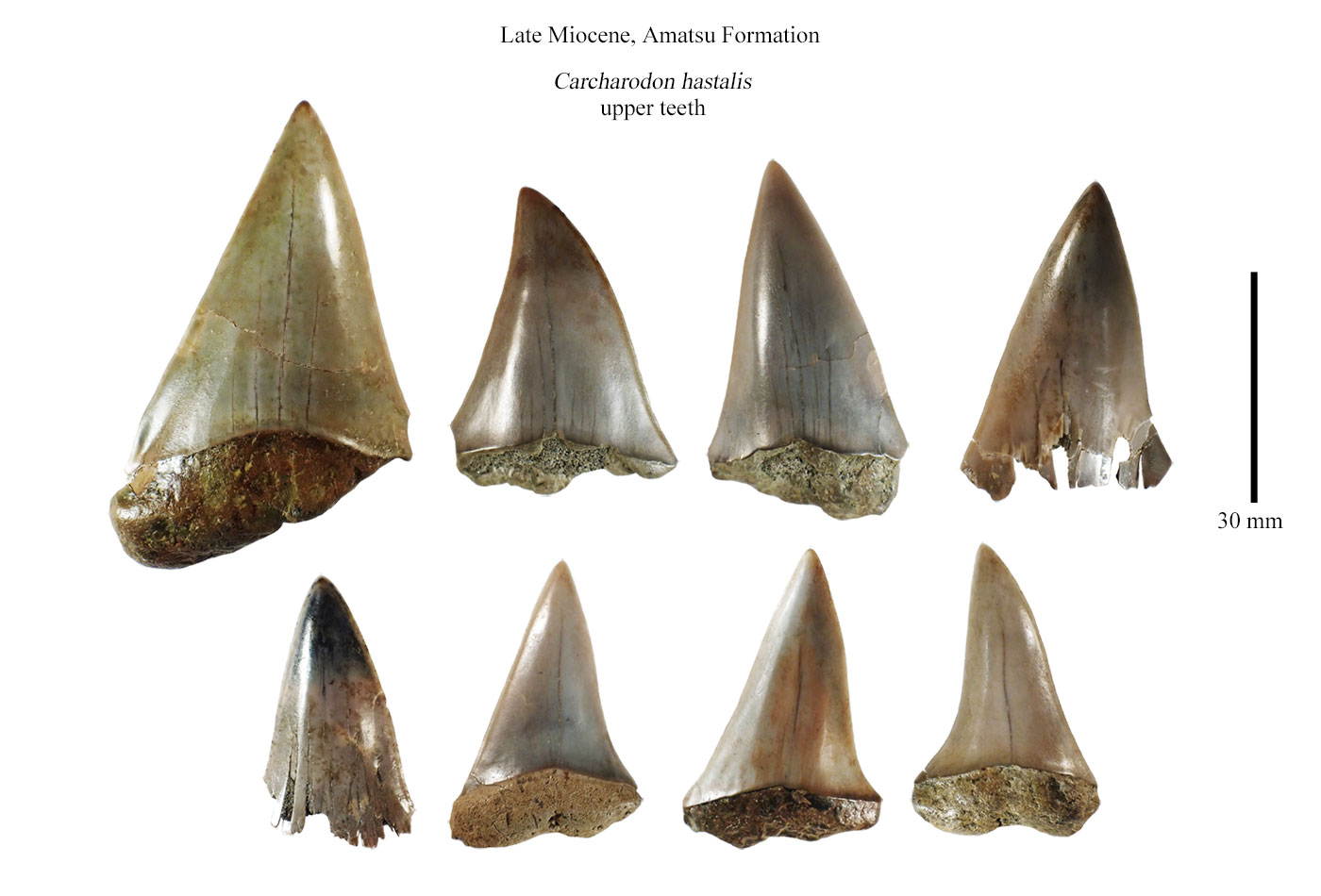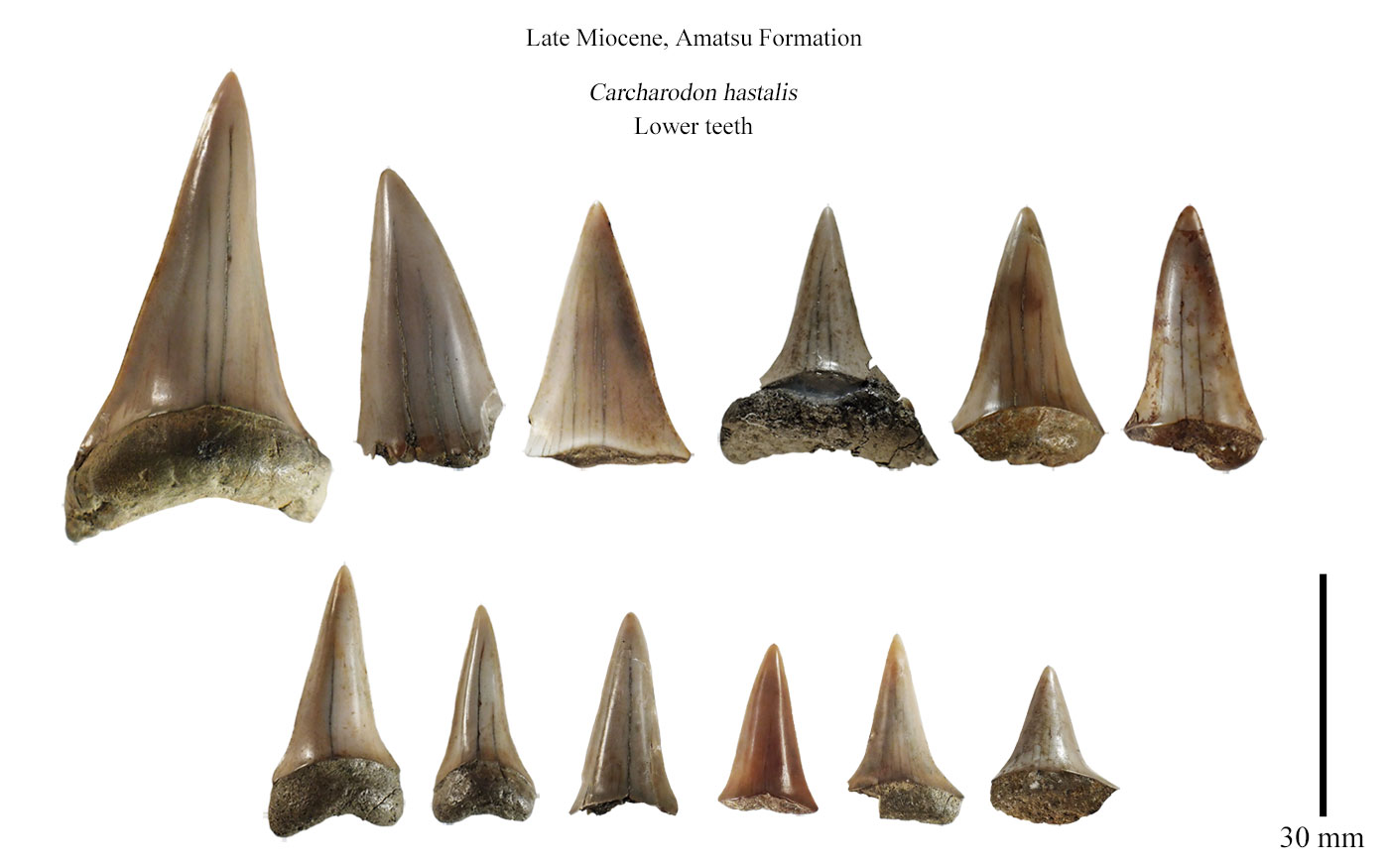Fossil teeth of Isurus planus often occur along with those of Carcharodon hastalis. For this reason, the study of I. planus must exclude the influence of fossil C. hastalis. In order to exclude the fossil teeth of C. hastalis and study only the teeth of I. planus, it is necessary to accurately identify those teeth and to know the ratio
of upper to lower teeth (recovery rate) of the obtained tooth fossils.
Even if it is impossible to know the recovery rate of I. planus, it would be possible to estimate the recovery rate of C. hastalis. Therefore, using the teeth of C. hastalis of the Late Miocene, Amatsu Formation, the recovery rate of the species
was determined. The results showed that for C. hastalis of the Amatsu Formation, the recovery rate was 54.6%.
Even if it is impossible to know the recovery rate of I. planus, it is permissible to assume that C. hastalis is similar to that of the Amatsu Formation if the state of preservation
of the fossils, which were both yielded in the same formation, is comparable
to that of the Amatsu Formation. |

